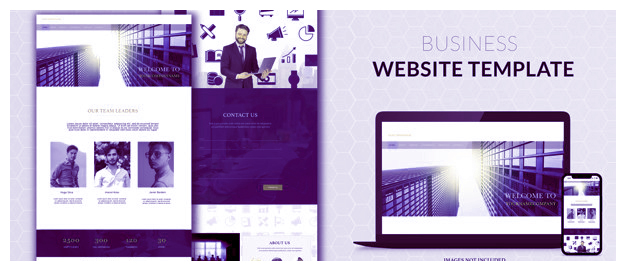Graphic Design and Web Design Courses Aldershot
Throughout today’s community, graphic designers have a broad variety of artistic and technological tools centred on visual communication and layout. Generally, graphic designers work through a range of techniques to produce icons, pictures and phrases that dynamically reflect their ideas and messages through areas such as business research, corporate identity / branding, logo design, advertisement layouts, book layouts, motion picture graphics, clothing / label design, food design, etc.
We see hundreds of examples of design all around us per minute of each day. Each of them are designed by graphic artists for the sake of visual communication. Graphic artists create advertisements, banners, news and articles in all forms, magazines, book covers, and interactive platforms, such as online browsers and mobile applications. As with the development of technology, the functions and abilities of graphic designers continue to change. graphic designers continue to change
Learn graphics and web design with Blue Sky Graphics and create your own logos and more!
What is the work of a graphic designer?
Graphic designers include inspirational and informative ideas in advertising, brochures, and other public relations media. Some graphic designers function in a joint collective of international design companies, some self-employed, while others operate separately. Print and visual designers use sophisticated design methods to manage text, pictures, and animations and colours.
The job of graphic designers revolves around detailed research of photographs and language, when they have the duty of conveying a particular message and call-to – action or sentiment depending on the client’s needs.
However, many graphic designers enjoy working with a number of clients, i.e. freelance. Freelance opens the door to a number of different opportunities due to the flexible nature of the job.

Branding
The name is the market image of the business and its goods or services. The advertising is influenced by the opinions of the consumers and what they believe about the company; the best picture is what makes it relevant. Both acts directed at placing the company are generally referred to as branding.

Creating the face of an organisation is important, so the logo you produce will represent the business in the best possible way. As a planner, it is a good practice to sit down with the customer and gain a full understanding of their goals and input into the field in which they work. It is all going to help you create a good reputation that you, and most specifically, your company, are pleased with.
Logo creation:
The logo is a graphic depiction of the business. It is one of the key elements of any brand and is usually among the first assets to be designed. Your emblem is a basic picture that you use to symbolize your company, much like the trademark of the business.
There are many forms of logos; some of them are characters, images, symbols, or simple geometric shapes. Nonetheless, a good logo is iconic and clear so that it can be easily connected to the company. You also want it to be versatile enough to be used in different ads, merchandise, and more.
It is just the beginning of the logo. Working on a brand enables the designer to participate, providing advice on other aspects of the process, such as advertising campaigns and marketing.

Creation of the websites on the internet
The construction of the website relates to the development of a website on the Web. Instead of developing software, the development of website apps typically applies to the user interface. Web design has traditionally known to concentrate on web client pages, but since mid-2010, projects have been more applicable to mobile and tablet apps.

The web designer focuses on the interface, the layout and the text. For illustration, the design involves the colours, fonts and photographs used. The style shall apply to the data that is ordered and classified. The efficient online interface is relevant, trendy and tailored to the user base and brand of the company.
How to choose the right colours for your website?
The colour of your brand is dominant. The hue can tend to bring out those thoughts or attitudes as visitors come to the website – things like love, anticipation and boldness. It is the colour of the day as you speak about your crowd. If you already have a logo, make sure that your dominant colour uses one of the key colours of your logo.
Different colours can attract customers of all styles and can even change the behaviour of consumers. To your gain, you should even use various colours to draw the consumer you desire. Do you want to draw cheaper, more enthusiastic or more affluent, more affordable customers? Are they best suited for any age group?
Not all the colours are correct for your company. For example, if you are selling yoga mats, using purple (wealth, royalty) or black (power, luxury) may not be the best option. You may want to suggest using green (health, tranquillity), grey (simplicity, calm), blue (peace, calm) or even red (passion, energy).
Only use your dominant colour in a limited number of areas that you want your website visitors to pay attention to or where you want your visitors to do other things (such as calling a phone number, filling in a contact form, signing up for a newsletter, etc.).
It is meant to “pop” the colour – to highlight where users want to focus.
Background Colour
Picking a backdrop colour is a lot like picking a wall paint tone! You want visitors to your website to feel relaxed by visiting the pages. You may not want to disturb the guests or find it impossible to consume the material by utilizing too dramatic or vivid background colours. Around the same time, you do not want your website to be so depressed that your viewers’ eyes gleamed over the insightful words you might like to suggest.
A white or black backdrop, vivid primary colours and highlights are the perfect paint scheme to be used in e-commerce and insightful websites. The bright, assertive and accent colours offer the website personality and focal points, while the plain background colour keeps the guests centred on the material or products.
When you choose to build a good brand image, you can use the various colours of the dominant or company colour as the backdrop colour.
Colour is closely linked to brand recognition. You improve your brand and make it more visible to your viewers when you use a variation of your dominant / brand colour as a background. If you have a bright logo hue, it can be too confusing for your background colour. If this is the case, consider selecting a lighter shade of your name.
If in question, use white or rather light grey as the backdrop colour. While this may not be the most motivational colour, you realize that the material will still come through.
Usage with Accent Colours
Accent colours are labelled as they illustrate things that you like to use further on your website. It is pretty dull to have only one colour on the web site. To make your template more enjoyable (and professional), you need accent colours to highlight interesting areas of your website, such as quotations, buttons or subtitles. Colour mixing and matching scares a number of people because colour mixing without knowing colour theory or other trials and mistakes cannot often be conveniently or intuitively represented.
Accent colours are used for content / items that are not the key focus points on the page, but you also want them to stick out — e.g. secondary caption icons, text boxes, background colours, etc.
Only remember to restrict the colours to 1 or 2 accents. If there were so many accent shades, there would be too many focal points to confuse the user.



